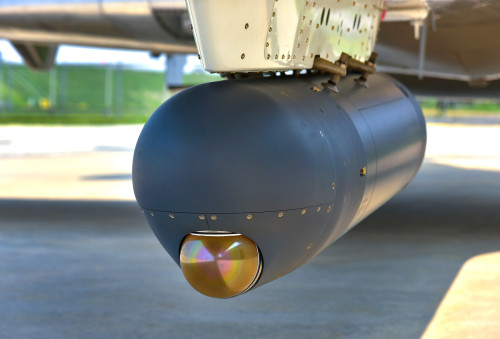Northrop unveils OpenPod as USAF seeks F-15 IRST
By:
Washington DC
Source: Flightglobal.com - 16 hours ago
Northrop
has responded to US Air Force interest in an infrared search and track (IRST) capability for its F-15C Eagle by unveiling OpenPod, a reconfigurable sensor pod which the company says is already being flight tested on a tactical military aircraft. Northrop’s system would employ an IRST produced by Italy’s Selex ES, owned by Finmeccanica.
The front end of the rail-mounted pod can be swapped out between sorties to host either an IRST, light detection and ranging (LIDAR), targeting, or communications payload.
James Mocarski, Northrop’s vice president of airborne tactical sensors, says OpenPod is the company’s answer to an unspecified air force sources-sought notice for an IRST system. It could also host the air force’s planned Maps System, a capability that will allow F-22s and
to exchange tactical information with legacy fighters, he says.
“OpenPod IRST combines state-of-the-art IRST sensor system technology from our partner Selex ES with the latest advances in target identification, clutter rejection and tracking from Northrop Grumman’s F-35 distributed aperture system, fire control radar, and infrared countermeasures products,” Mocarski said at the June 2 unveiling in Washington DC. “It’s our intended entry into an upcoming air force competition for infrared search and track.”
The air force’s F-15 division has
in a production-ready IRST capability for fielding in 2018, and in a longer-term development effort that would acquire a more advanced system in the 2020 time frame. The sensor would allow legacy, fourth-generation aircraft to “detect, track, target, and engage threats in radar denied environments.”
Meanwhile, the air force research laboratory is exploring next-generation IRST technologies with a programme to mature and demonstrate advanced, long-range offensive infrared search and track capabilities.
Northrop’s OpenPod would will compete against
’s Legion Pod, unveiled in February. Legion Pod is a derivative of the company’s IRST21 sensor for the US Navy
.
Lockheed intends to qualify the Legion Pod on the F-15 and F-16 with test flights planned this spring and into 2016. Mocarski declined to name any specific aircraft type for Northrop's product, but the F-16 and F-15 would be ideal candidates. ...



